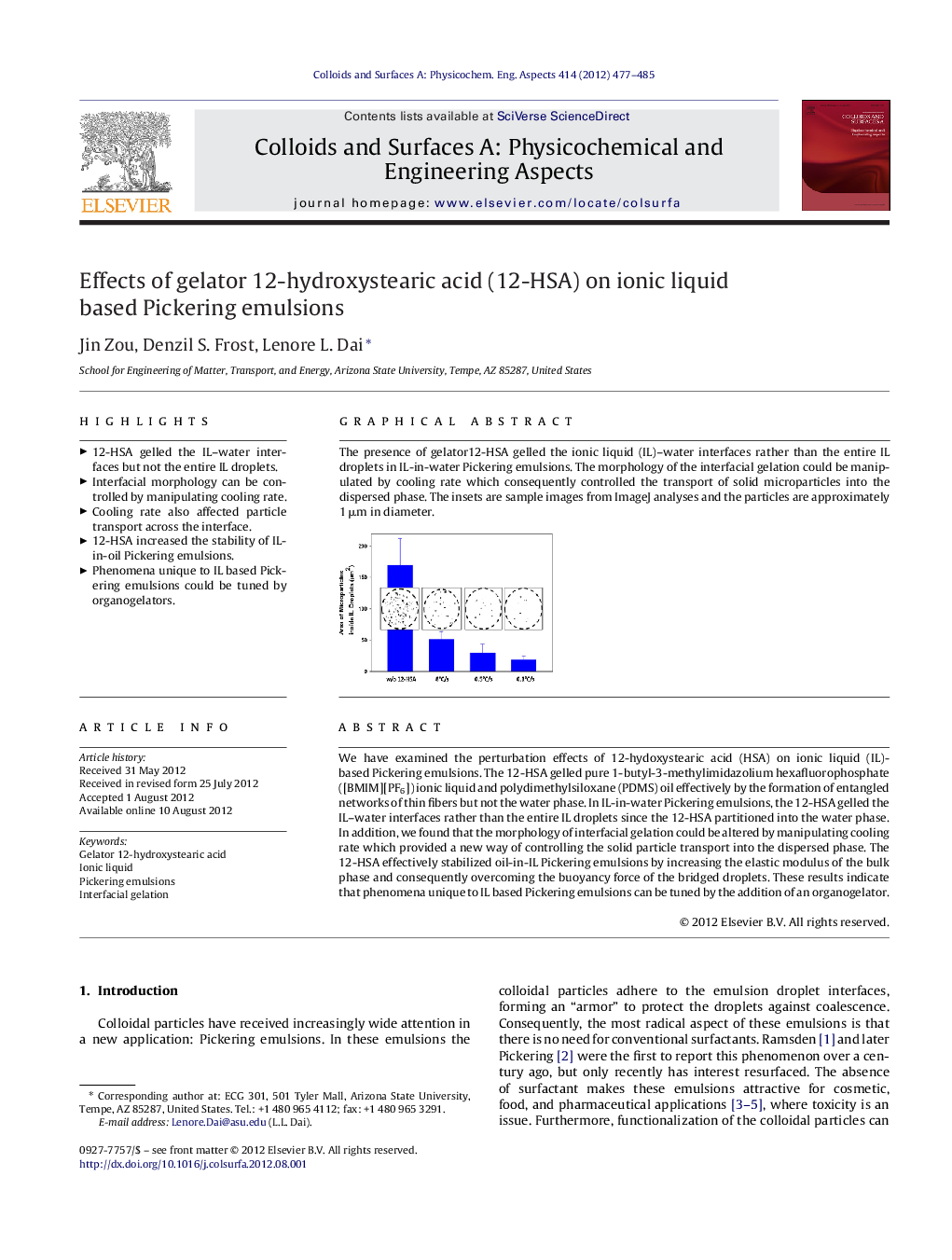| Article ID | Journal | Published Year | Pages | File Type |
|---|---|---|---|---|
| 594026 | Colloids and Surfaces A: Physicochemical and Engineering Aspects | 2012 | 9 Pages |
We have examined the perturbation effects of 12-hydoxystearic acid (HSA) on ionic liquid (IL)-based Pickering emulsions. The 12-HSA gelled pure 1-butyl-3-methylimidazolium hexafluorophosphate ([BMIM][PF6]) ionic liquid and polydimethylsiloxane (PDMS) oil effectively by the formation of entangled networks of thin fibers but not the water phase. In IL-in-water Pickering emulsions, the 12-HSA gelled the IL–water interfaces rather than the entire IL droplets since the 12-HSA partitioned into the water phase. In addition, we found that the morphology of interfacial gelation could be altered by manipulating cooling rate which provided a new way of controlling the solid particle transport into the dispersed phase. The 12-HSA effectively stabilized oil-in-IL Pickering emulsions by increasing the elastic modulus of the bulk phase and consequently overcoming the buoyancy force of the bridged droplets. These results indicate that phenomena unique to IL based Pickering emulsions can be tuned by the addition of an organogelator.
Graphical abstractThe presence of gelator12-HSA gelled the ionic liquid (IL)–water interfaces rather than the entire IL droplets in IL-in-water Pickering emulsions. The morphology of the interfacial gelation could be manipulated by cooling rate which consequently controlled the transport of solid microparticles into the dispersed phase. The insets are sample images from ImageJ analyses and the particles are approximately 1 μm in diameter.Figure optionsDownload full-size imageDownload as PowerPoint slideHighlights► 12-HSA gelled the IL–water interfaces but not the entire IL droplets. ► Interfacial morphology can be controlled by manipulating cooling rate. ► Cooling rate also affected particle transport across the interface. ► 12-HSA increased the stability of IL-in-oil Pickering emulsions. ► Phenomena unique to IL based Pickering emulsions could be tuned by organogelators.
